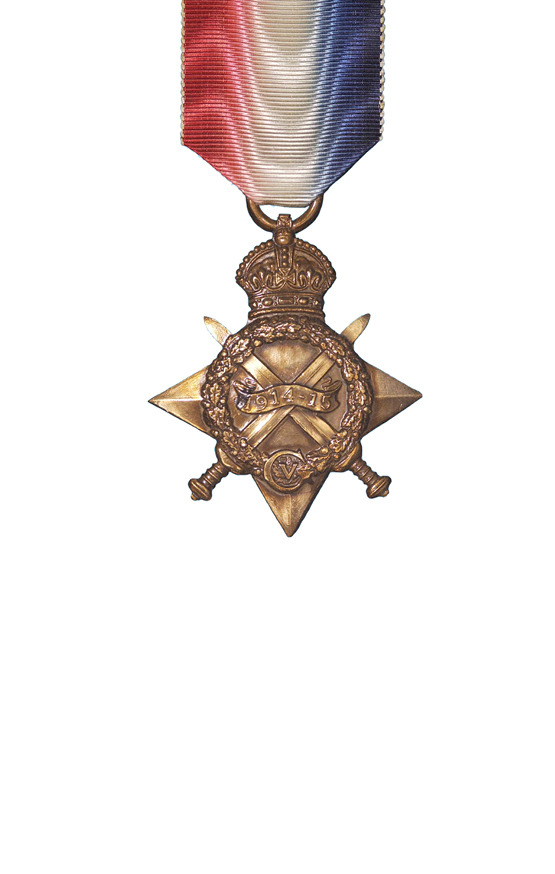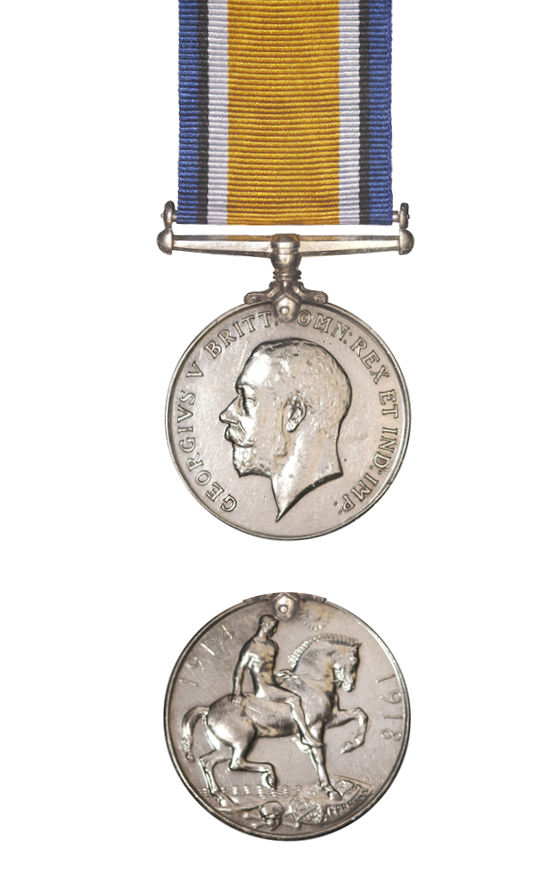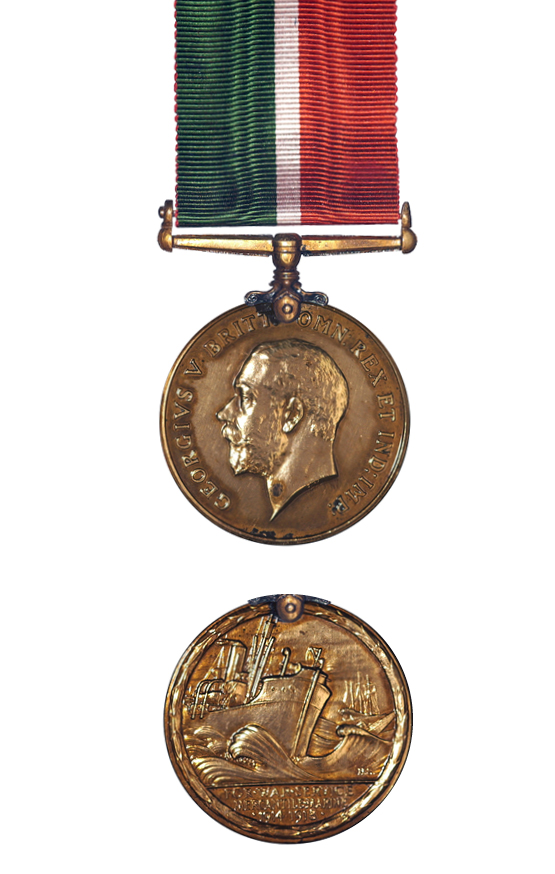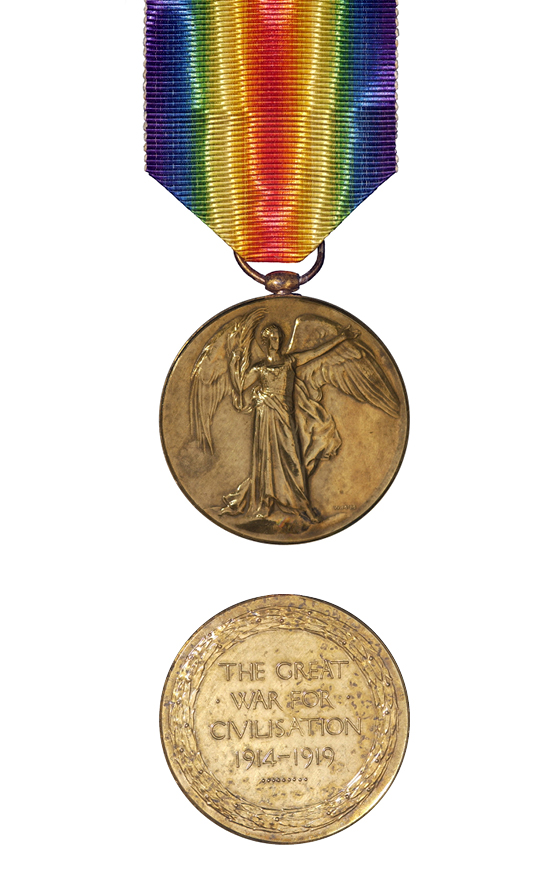Display No. 21C
Campaign Medals – First World War
Campaign or service medals are awarded to those who serve in specified campaigns or military operations. They recognise general military service in war (in contrast to Decorations which are issued for acts of heroism and bravery). Five British medals were instituted to recognise service in the First World War including the Mercantile Marine War Medal which was issued to Merchant Navy seamen. They were sent out automatically with the recipient’s service number, rank, name, and unit (ship) impressed on the rim or back. First World War veterans were commonly awarded three main medals: the 1914 or 1914-15 Star, the British War Medal and the Victory Medal. This three-medal set was often irreverently referred to ‘Pip, Squeak & Wilfred’ after a well-known 1920’s comic strip trio – Pip the dog, Squeak the penguin, and Wilfred the rabbit. When only the British War Medal and Victory Medal were issued together, they were sometimes called ‘Mutt & Jeff’ after another pair of cartoon characters.
Medal(s)
Medal Description [Left to Right]:
The 1914-1915 Star

The 1914-15 Star was awarded to servicemen and servicewomen who served in the First World War between 5 August 1914 and 31 December 1915 in any “theatre of war”, provided they had not qualified for the 1914 Star. This included service at Gallipoli between 25 April 1915 and 31 December 1915, service in Egypt between 5 November 1914 and 31 December 1915, and service during the capture of German Samoa on 29 August 1914. Those eligible for the medal must have “served on the establishment of a unit in a theatre of war” during the relevant dates of operations in that area. The ribbon’s red, white and blue shaded and watered bands represent the flag of the United Kingdom.
The British War Medal

The British War Medal was instituted in 1919 to recognise the successful conclusion of the First World War (1914-1918). Its coverage was later extended to recognise service until 1920, recognising mine clearing operations at sea, and participation in operations in North and South Russia, the eastern Baltic, Siberia, the Black Sea and the Caspian Sea.
The Mercantile Marine War Medal

The Mercantile Marine War Medal, instituted in 1919, was awarded to all members of the Merchant Navy who had undertaken one or more voyages through a war or danger zone during the First World War. The ribbon has three bands: green, white and red. These represent a ship’s starboard (green) and port (red) running lights with the masthead (white) steaming light in the centre.
The Victory Medal

The Victory Medal was awarded in the First World War to all those who had already qualified for the 1914 Star or the 1914-15 Star, and to most persons who had already qualified for the British War Medal. The Victory Medal was awarded to all New Zealand troops serving overseas, except for those who arrived in Samoa after 30 August 1914 and those serving in Great Britain only. It has a unique double rainbow ribbon.
A bronze spray of oak leaves on the medal ribbon denotes that the recipient was Mentioned in Despatches during the period that the medal recognises. To be Mentioned in Despatches a member of the armed forces has had their name mentioned in an official report, written by a superior officer, and sent to a higher command. The report would describe the individual’s gallant or meritorious action in the face of the enemy.

